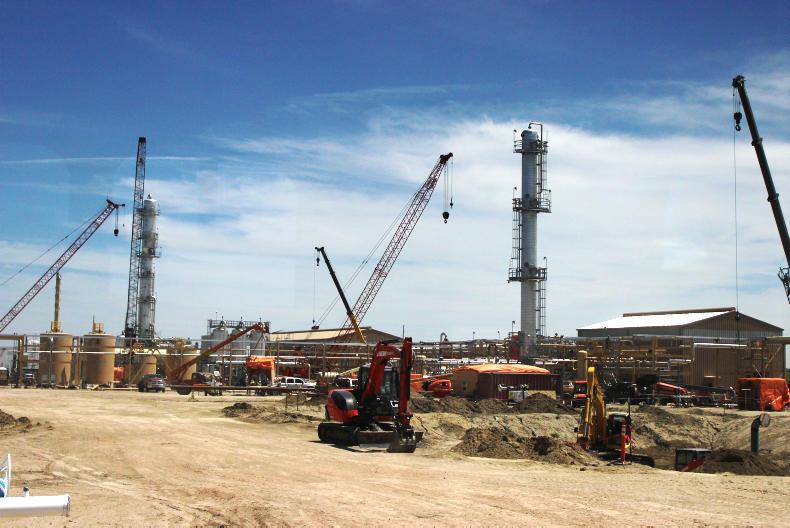US benchmark West Texas Intermediate crude futures climbed around 43% in 2016, the largest annual gains since 2009, while Brent front-month March crude futures rose about 50% this year, Reuters reports.
Oil price has more than halved since the summer of 2014, when it was above $100/barrel.
Global oil markets reached crisis point in January 2016, when oil hit 12-year lows of less than $28/barrel.
The fall in prices due to oversupply, in part thanks to the US shale oil revolution, was accentuated when Saudi Arabia rejected any Organization of the Petroleum Exporting Countries (OPEC) deal to cut output and instead fought for market share.
New deal
But a new OPEC agreement to reduce production, struck over three months from September this year, marks a return to the 13-country group's old objective of defending prices.
The deal is set to come into effect on 1 January and will stay in place for six months.
OPEC and non-OPEC producers are expected to lower production by almost 1.8m barrels per day, with Saudi Arabia, OPEC's largest producer, agreeing to bear the largest share of the cuts.
Oil will gradually rise towards $60/barrel by the end of 2017, a Reuters poll showed on Thursday, with further upside capped by a strong dollar, a likely recovery in US oil output, and possible non-compliance with agreed cuts, the news agency reports.
With 30% of global dairy exports going to oil economies, the expected upturn in oil prices is good news for powder markets, with over 300,000t of skimmed milk powder still in public intervention. The drop in oil revenues in 2016 hit the buying power of these countries and hence the demand for dairy powders.
Read more
Only 40t of SMP sold in first EU intervention stock tender
US benchmark West Texas Intermediate crude futures climbed around 43% in 2016, the largest annual gains since 2009, while Brent front-month March crude futures rose about 50% this year, Reuters reports.
Oil price has more than halved since the summer of 2014, when it was above $100/barrel.
Global oil markets reached crisis point in January 2016, when oil hit 12-year lows of less than $28/barrel.
The fall in prices due to oversupply, in part thanks to the US shale oil revolution, was accentuated when Saudi Arabia rejected any Organization of the Petroleum Exporting Countries (OPEC) deal to cut output and instead fought for market share.
New deal
But a new OPEC agreement to reduce production, struck over three months from September this year, marks a return to the 13-country group's old objective of defending prices.
The deal is set to come into effect on 1 January and will stay in place for six months.
OPEC and non-OPEC producers are expected to lower production by almost 1.8m barrels per day, with Saudi Arabia, OPEC's largest producer, agreeing to bear the largest share of the cuts.
Oil will gradually rise towards $60/barrel by the end of 2017, a Reuters poll showed on Thursday, with further upside capped by a strong dollar, a likely recovery in US oil output, and possible non-compliance with agreed cuts, the news agency reports.
With 30% of global dairy exports going to oil economies, the expected upturn in oil prices is good news for powder markets, with over 300,000t of skimmed milk powder still in public intervention. The drop in oil revenues in 2016 hit the buying power of these countries and hence the demand for dairy powders.
Read more
Only 40t of SMP sold in first EU intervention stock tender






 This is a subscriber-only article
This is a subscriber-only article











SHARING OPTIONS: